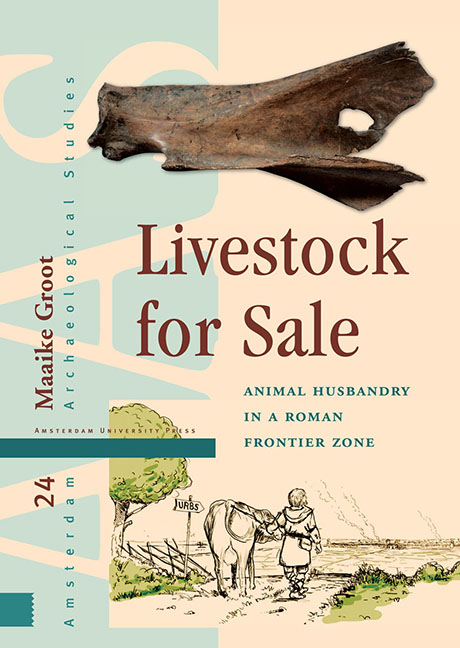Book contents
2 - Archaeological Sites: Background
Published online by Cambridge University Press: 17 June 2021
Summary
DATA AND METHODS
In the decades since Lauwerier's publication on animal husbandry in the Roman River Area, many new archaeological excavations have been carried out, mostly developer-funded. The size of these excavations varies from small test trenches to large-scale excavations of complete settlements. The quality of the excavations and the archaeological reports also varies. Information for some sites is limited to animal bone data, with little information on the other archaeological finds and structures. Likewise, the size of animal bone assemblages and the detail in which they have been analysed and published is variable. Fortunately, several zooarchaeological colleagues were generous in sharing unpublished reports and primary data.
The selection of sites for this study is based on the presence of animal bones, for which reports or data were available. The description of the archaeological sites in paragraph 2.3 includes some information on the most important archaeological finds and structures, the chronology, any remarkable finds that could be related to production or trade, any relevant botanical data and basic information on the animal bone assemblage. Z.1 lists all the sites included in this study. Site numbers refer to a map of the research area (fig. 2.1), while the codes are used in illustrations in chapters 5 to 7. The table further includes the type of site, the size of the animal bone assemblage (both total size and identified fragments only) and the date of the assemblage. The collection of animal bone data from these sites for this study focused on fragment counts for domestic and wild species, and for the main domestic species skeletal elements, age data, measurements and butchery marks. Not all data could be collected for all assemblages, especially for the smaller ones.
The numbering of the sites is not always logical. The numbers referring to site locations in some cases cover several separate sites. One number has been used where sites are close together, have been excavated by the same archaeologists and are published together. Examples are Huissen-Loostraat Zuid, sites A and D and Zaltbommel-De Wildeman, sites A, B and C. In some cases, animal bone assemblages from what is essentially the same site have been given a separate number, because they were analysed and published by different people.
- Type
- Chapter
- Information
- Livestock for SaleAnimal Husbandry in a Roman Frontier Zone, pp. 21 - 56Publisher: Amsterdam University PressPrint publication year: 2016



